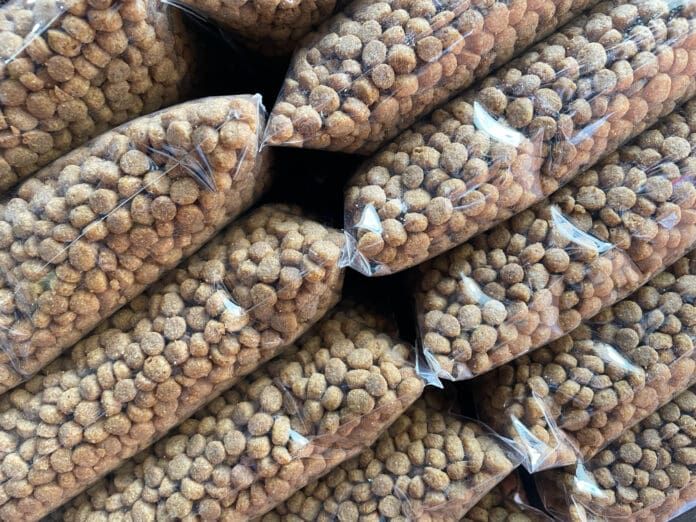Owners of dogs who suffer from food allergies who don’t feel capable of or willing to carry out a rigorous trial may prefer to try a commercial dog food for allergies. One that has been processed in such a way as to render the proteins hypoallergenic, or one designed specifically for use in an elimination diet. Chances are good that your veterinarian carries at least one of these types of food. Some are limited-ingredient diets, available over the counter; others are prescription diets. All cost around 30 percent more than even the best nonprescription dog foods.
Dog food for allergies that are described as “low-antigen” are simply limited-ingredient products. These usually contain a single animal protein source and a single carbohydrate source – but they may also contain a lot of other ingredients, any of which your dog could be allergic to. If, after studying your own list of foods and ingredients your dog has eaten while displaying signs of allergy, you are fairly certain that you have identified an ingredient or ingredients common to all of those foods, you may be able to find and successfully use a limited-ingredient diet that does not contain the suspected ingredients.
“Certainly, if your dog stops itching on a diet containing whitefish and sweet potato, you can just heave a sigh of relief and feed that,” Dr. Fatcheric says. Keep in mind, however, that dogs who display an allergy to one food ingredient are prone to developing allergies to other ingredients over time. In other words, the whitefish and potato diet may be a blessing to your dog now, but he may eventually become allergic to whitefish and then you will need to start over with a search for a new “novel” food.
Dog Foods with Hydrolyzed Proteins
Products made with hydrolyzed protein are a completely different solution.
Hill’s Prescription Diet offers perhaps the best-known of these diets, z/d Ultra Canine. “This is a chicken-based diet, but the chicken protein is molecularly hydrolyzed into smaller amino-acid sequences, which the immune system does not recognize as foreign. Therefore, it won’t trigger an allergic reaction,” Dr. Fatcheric explains. In the dry version of this product, “starch” is first on the ingredient list, with hydrolyzed chicken liver second, and hydrolyzed chicken fourth; in the canned version, hydrolyzed chicken liver is second only to water on the ingredient list.
Purina Veterinary Diets offers two hydrolyzed diets: HA HypoAllergenic Canine Formula, a vegetarian food made with hydrolyzed soy protein (second to starch on the ingredient list), and HA Chicken Flavor, which also contains hydrolyzed soy protein as the second ingredient (starch is first), but adds hydrolyzed chicken liver and hydrolyzed chicken in the eighth and ninth positions on the ingredient list.
Royal Canin makes six dry foods and two wet foods that contain hydrolyzed soy proteins, as well as an “anallergenic” dry food that is made with “hydrolyzed poultry byproducts aggregate”- which turns out to be made from poultry feathers. Royal Canin also makes hydrolyzed dog treats.
Be aware that the ingredients used in these foods look awful compared to products that meet our selection criteria (see “Whole Dog Journal’s Approved Dry Dog Food List 2015,” for more information about identifying a top-quality food). They aren’t intended for any but the most intractable, severe cases of canine allergy. For dogs who are hypersensitive to a number of ingredients, they may be the only solution that works well, or works at all. This is one of those rare cases when there are very good reasons to feed a diet containing what we would otherwise consider low-quality ingredients.






